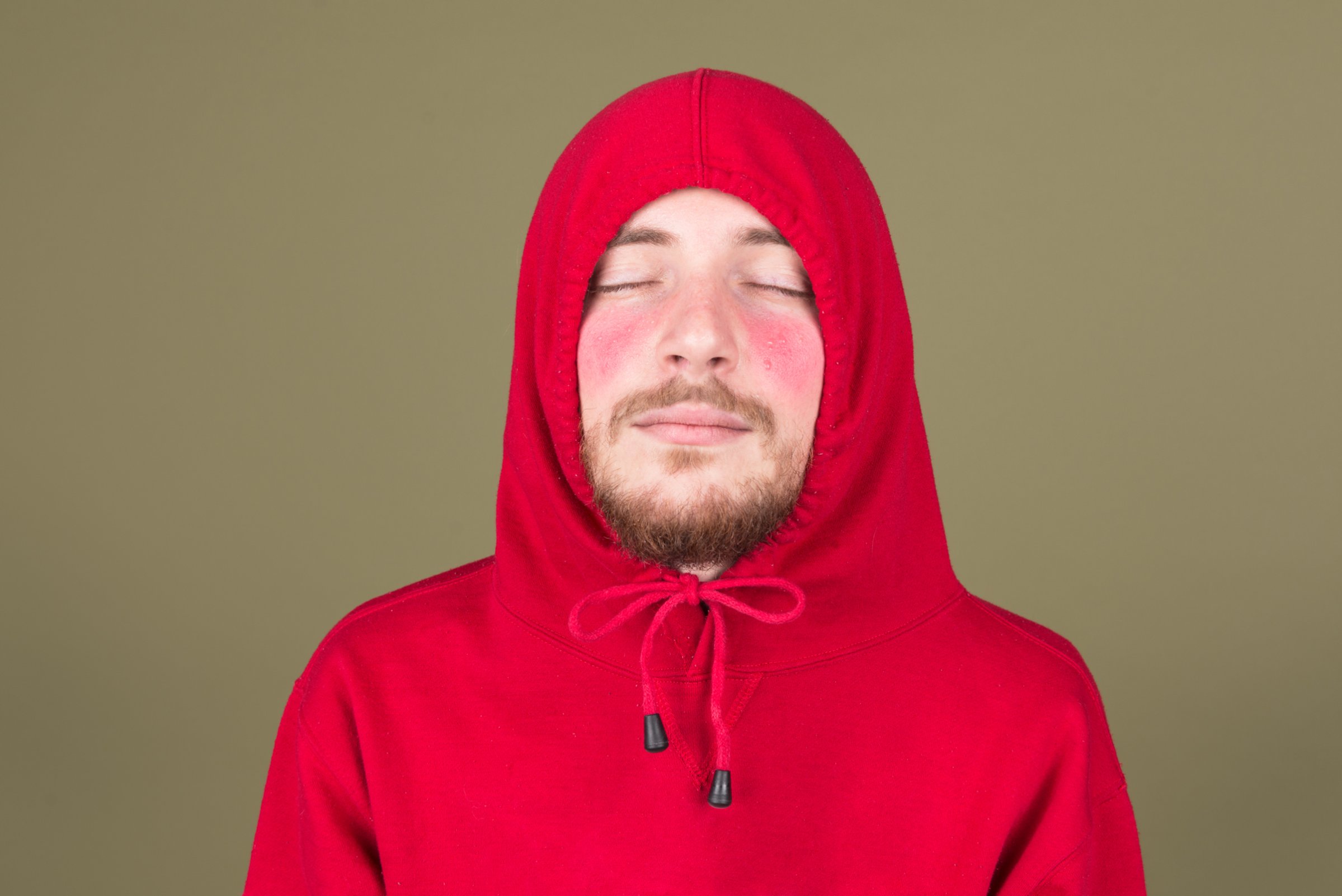
Stand outside a Flywheel or CrossFit studio, and a stream of sweaty, red-hued faces will eventually stagger out. You may have noticed the same unsubtle rouging of your own cheeks after a long run or bike ride. But why so red?
“As your body heats up during activity, your core temperature and your skin temperature increase,” says Edward Coyle, director of the Human Performance Laboratory at the University of Texas at Austin. In an effort to cool you off, your blood vessels and skin pores open, which allow your blood to flow closer to the surface of your skin. “This helps cool your blood and therefore your body,” Coyle says. “But especially if your skin is very pale to begin with, that increased blood flow may result in a red or flushed appearance.”
Coyle’s research has shown that endurance athletes experience greater blood flow to the skin during exercise. This rush of blood to the skin also seems to happen earlier during activity for trained athletes compared to couch potatoes, he says. But when it comes to the deepness of your skin’s flush, “that doesn’t correlate with cutaneous blood flow,” he says.
Translation: The shade of crimson your face takes when you’re hot isn’t simply a matter of increased blood flow. Your skin’s chemistry also plays a role.
When your vessels dilate, the influx of blood can cause the cells in your skin to open and release their contents. Those contents vary from person to person and may include a type of fatty compound called a prostaglandin, which may contribute to the redness you experience during exercise (or during an embarrassed blush), says Dr. Garret FitzGerald, a professor of medicine at the University of Pennsylvania.
“For some people, exercise can cause the cells in the skin to release histamine, which in turn can cause the blood vessels to widen, adding to the exercise-induced flushing,” says Dr. Adam Friedman, associate professor of dermatology at the George Washington University School of Medicine and Health Sciences. In extreme cases, this could even lead to a form of hives, he says.
Also, for those with rosacea—a common condition involving hypersensitive blood vessels and an overactive immune system, both of which lead to red or inflamed skin—exercise, alcohol or even spicy food can cause a deep flush, Friedman says. “This is especially common among women and those of Northern European descent,” he adds.
So the amount of facial reddening you experience because of exercise depends on a lot of factors, from your genes to your fitness level.
Should you do anything about it? For people diagnosed with rosacea, there are topical treatments available that can help control the flush, Friedman says. And for others who may have extreme flushing due to the release of histamine, some antihistamine drugs like Cetirizine may help douse the cutaneous flames if you take it before exercising. (Talk with a dermatologist if it’s stressing you out.)
But for most people, exercise-induced flushing is benign: a nuisance to be endured and ignored.
“It’s not dangerous,” Friedman says. “It’s just a combination of your skin tone and chemistry.”
More Must-Reads from TIME
- How Donald Trump Won
- The Best Inventions of 2024
- Why Sleep Is the Key to Living Longer
- Robert Zemeckis Just Wants to Move You
- How to Break 8 Toxic Communication Habits
- Nicola Coughlan Bet on Herself—And Won
- Why Vinegar Is So Good for You
- Meet TIME's Newest Class of Next Generation Leaders
Contact us at letters@time.com